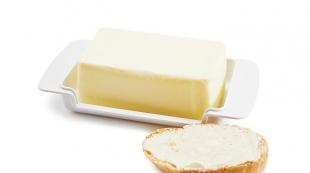Energy saving house technology. Energy efficient ventilation
Building energy efficient houses - is there any benefit? When it comes to building their own private house, people begin to consider all possible options for projects and structures, in addition to those familiar to everyone, which are considered standards. Most people want to make their home as economical as possible in terms of electrical energy consumption. The ideal option in this case is the construction of an energy-efficient house, or as it is also called a “passive house”.
Such structures can be of several types (from straw, domed houses) and are characterized various features, which should be considered by those who want to build such a house.
Such a concept as energy efficient house, includes many characteristics that are aimed at ensuring that the house has the maximum savings in the consumption of electrical resources. In this case, the house will always have comfortable conditions and a favorable microclimate.
The normal indicator of electrical energy consumption for a house of this type is 15 kW / h based on an area of 1 m 2. During the year, energy will be consumed in an amount that does not exceed 120 kW / h per 1 m 2. When considering energy-efficient homes, it's a good idea to take a look at each system individually.
architectural question
When designing an energy-saving house begins, even its location, size, and the presence of additional “thermal” buffers should be taken into account. These include verandas, garages, basements and more. Regarding the location, ideal option will be the latitudinal direction. Equally important is the ratio of the external and internal area of the building. For windows, choose the most suitable place and size. Most of the windows will be located on the south side of the structure and in those rooms that will be used most often.
Often, solar tubes are used to enhance the flow of heat energy in the house. This is an element with a diameter of up to 35 cm, which serves to receive heat on the roof and redirect it to the rooms inside the house. As for the roof, the maximum possible gentle slope is provided here. This will enable in winter time keep snow and thereby create additional insulation.
thermal insulation
As for insulation, there are constant heat losses through the surface of the floor, walls and roof, which leads to such a step as the insulation of these structures. For walls and roofs, similar materials are suitable as heaters, but the main point is to observe the thickness of the insulation, it should be 20 cm. To exclude heat outflow from inner space through windows, inert gas filled glass or selective glass can be used. To insulate the floor on the first floor, you can use various materials, for example, bulk mixtures or.
A prerequisite for construction is insulation. To do this, you can use sprayed polyurethane, expanded clay or foam. Is it profitable to build an energy efficient house in Russia? Definitely. Even at the initial cost, you will build it cheaper than many other home options, and enjoy savings in the future.
Ventilation system
An ideal option for energy construction would be the construction of a ventilation system, which is equipped with a heat exchanger. Such a system will eliminate all heat leakage, and it works on the principle of air masses. The cold, fresh air flow that is directed into the house will pass through the heated air in the room. Heating will occur due to the heat transfer of the outgoing air of their room towards the fresh flow.
Heating
During the construction of these types of houses, the use of autonomous heating systems is not required.
But if you still want to install heating, you can use the following devices:

Varieties
As for the construction of this type of houses, the classification is based on the level of consumption of electrical energy:
- Passive. This house is characterized by resource consumption in the idea of 30% compared to an ordinary house. In such a house there is no cold bridge due to well-equipped insulation, but at the same time the thickness of the walls is 30 cm. ventilation system and additional items of equipment for heating. Most often used collectors. The building is equipped with a supply of electrical resources, which is considered independent.
- Ultra low power consumption. In terms of specific resource consumption, this is from 17 to 45 kW per hour / m 2 per year.
- Low consumption. Energy resources can be consumed in the value from 37 to 60 kW per hour / m 2 per year.
- Reduced energy consumption. In this case, the savings percentage is 70%. The material for thermal insulation, which is laid in the wall structure, will be from 16 cm or more in thickness. heating system which works in a circular fashion.
- Zero expense. Such houses are distinguished by the fact that they simply do not have electricity in the form of communication. Certain structures can themselves reproduce electrical energy and give it to the public network. The walls should be 40 cm thick. The houses have mechanical ventilation, as well as tanks and collectors in which warm water is stored.
How to build?
Among the ways to build energy-efficient houses, Finnish is most often used. For construction, you need to use frame technology, and in this case it will not be difficult to build a house with your own hands.
To do this, you can use the following algorithm and understand how to build:
- The foundation, which will be ideal for a Finnish-type house, is pile or. Let's deal with them first.
- The house is built from a bar, which, before starting work, should be carefully processed with the help of certain ones. Before tying, the foundation surface should be covered with a layer of waterproofing film or other similar material.
Note, that when designing the strapping, care should be taken to ensure that the location is strictly horizontal.
- In the manufacture of the wall structure from a bar, we fasten everything with the help of studs or self-tapping screws, while the elements must join the groove into the groove.
- For the floor use plywood or sheets. The floor trim must be laid, while maintaining a distance that will be optimal for installing the sheets.
- On top of the lower trim, you will need to install a log with a distance that will be equal to the width of the insulation material. In places where the load will be increased, the log should be docked.
- After OSB boards stacked, you can lay out the material with which you will insulate the floor, for example, mineral wool.
- After that, spread a layer of material on top.
- To prevent rotting of the floor, build a gap for ventilation. An excellent option would be to use boards that need to be laid along the entire length of the subfloor. Attach sheets of OMB or plywood on top.
- For the manufacture of the ceiling, it is recommended to use beams that have a cross section of 24.5 * 5 cm. The laying step should be 30-35 cm.
- Attach plywood on top of the beams, and in this way you will be able to build a draft floor / ceiling for an attic or a full-fledged second floor.
- For the manufacture of truss system use the bars on top of which the crate will be attached.
- An important point is warming. To begin with, we provide protection from the wind, and for this it will be necessary to sheathe the frame. To do this, use the plates.
- A film must be fixed on the surface of the plates, and after that, racks, which will be the basis for creating the exterior finish of the house.
- The house from the inside also requires insulation. The material to be used for this is mineral wool or cellulose.
Manufacturers
Manufacturers say that it is even possible to build an energy-efficient turnkey house:
- To start designing frame house and do everything on a turn-key basis. When ordering, experts will help you so that you can choose the best materials that are of the best quality.
- Construction Finnish houses who are the embodiment modern technologies, various projects that are not similar to each other and are unique.
- In addition to building a house, it is planned to use innovative resource conservation systems (electricity). Among other things, we note that all systems and equipment are installed and configured by professionals.
Advantages and disadvantages
The advantages of modern energy efficient houses are as follows:
- external attraction. Due to the fact that wood or material from it is used to build a house, it is possible to create the most unusual and unique projects.
- High level of security, reliability. Subject to all necessary conditions and adhering to the requirements, you will get a structure that will be resistant to the effects of negative environmental factors.
- Environmentally friendly. Living in such a house is absolutely harmless to human health.
- Ease of construction. You can even build a house with your own hands, and it is not necessary to hire a team of workers or use equipment. Construction time is short.
- Saving. This advantage has become a purpose. Living in such a house does not require large expenses.
We have put together some helpful tips for you:
- Before starting construction, consider all the features of the location, namely the relief, climate, soil. The choice of the most suitable materials will depend on this.
- Approach carefully to the choice of the foundation, because although the construction of the house is not so heavy, but when building a house with two floors, it is better to give preference to a solid and reliable foundation.
- Use for interior decoration drywall or plywood. The best option will use ceiling panels for sheathing.
Conclusion
Building an energy efficient house for year-round living will be a sure choice.
In addition, the process does not require large cash costs and operation makes it possible to save the budget.
If we take into account that the period of use of the house reaches up to 100 years, and the house is comfortable and cozy, then living in it will only positive emotions. As you can see, such a construction is beneficial in all respects.
On September 23-24, in the city of Zaporozhye, a seminar "The experience of Germany and Ukraine in housing management and thermal sanitation of buildings" was held.
Seminars and events of the German-Ukrainian project "Energy-saving rehabilitation of residential buildings" are held in Ukraine during 2012-2015. The event was held with the financial support of the Friedrich Naumann Foundation FOR FREEDOM.
This seminar brought together representatives from different parts of Ukraine: Kherson, Odessa, Kryvyi Rih, Kharkov, Melitopol, Lvov. And, of course, the project partners from Germany.
This is not the first time this team has gathered in a similar composition, and, which is especially pleasing, every time I see more and more new faces.
I have determined the motto of this meeting for myself: “Winter is coming!” - short, concise, but still so much sense. This, in fact, was the main topic of conversation. Everyone is very concerned about the coming winter, or rather, the heating period.
How will we winter? How to heat our housing? How to keep warm?
Probably, every Ukrainian now asks himself these questions and is looking for any solutions. Only now the people who have gathered at this seminar think not only about their living space, but also about their condominiums, cities and regions.
Just as every housewife has her own recipe for borscht, so every energy efficiency specialist has their own solutions and advice on how to use energy in the most efficient way. After listening to a lot of speeches at this seminar, I got the impression that each "hostess" told her recipe for borscht. They are, in principle, very similar, the ingredients are almost identical, but every cook wants to add something of their own, some mushrooms, some beans and always a piece of the soul. Summing up, I would like to bring to your attention the first Energy efficiency recipe book.
Complex lunches
Before you start cooking dinners, you need to clearly know how many people you are cooking for, no matter what happens, that a few servings were superfluous. Translating all this to the topic of energy efficiency, the process of thermal modernization should be carried out in a complex manner using the “Economically feasible model of sustainable energy development of heat supply”. This is where the order of the cooking steps is very important. First, we carry out thermal modernization of the building, that is, we reduce energy consumption, then, simultaneously with staff training, we are engaged in the reconstruction of heating mains and the installation of a biofuel boiler, already taking into account the reduced energy consumption. As a result, all products (cash) are used rationally and with maximum efficiency.
Fedor Barulin, Chairman of the Board of HOOO "Regional Council of Entrepreneurs", Leading Expert of LLC "Regional Energy Service Campaign", Kherson
Energy efficient snacks from Vadim Demchenko
- "Window under the film"
Ingredients:
– energy-saving film for windows “Third Glass”
Apply an energy-saving film to a previously prepared window, it is almost transparent and transmits up to 85% of light. Without additional heating, you get an increase in the temperature in the room by 3-6 ° C.
- "Ventilation ducts under a fur coat"
Ingredients:
- ventilation duct
- "door", can be replaced with cardboard
In addition to windows and doors, heat escapes through ventilation ducts, especially if you live on the upper floors. Because the Ventilation openings must not be completely closed. equip them with a special door or cover with a piece of cardboard. This will help raise the temperature by 5 - 7 ° C
- "Batteries are warm"
Ingredients:
- battery
- heat insulator (extruded polystyrene foam or chipboard)
- foil
To keep the heat in the room, we need a heat shield. To prepare, take a heat insulator and stick foil on it, or you can immediately use ready-made polyisol, which you can purchase at any hardware store. Next, place it between the wall and the battery. The dish is ready to eat. The heat transfer of the radiator will increase by 20%, while the cost of heating the room is reduced by 4%.
- "Batteries" warm "with dark brown sauce"
In addition to the previous recipe, you can repaint the batteries dark brown, it has been proven that this color gives off 8 - 10% more heat than white. To do this, remove layers of old paint from the batteries, making their surface smooth, then paint the batteries from top to bottom with a brush.
Vadim Demchenko, Head of the Department for Investment Activities of the Zaporozhye City Investment Agency, Zaporozhye
Preparations for the winter for the city of Zaporozhye
98% of the city's heat needs are provided by large gas boilers and there are only 30 small boilers that can be converted to alternative fuel, that is, the only way out is to use electric heating for warming up. To minimize possible Negative consequences mass use of electricity, it is planned to install switching devices - "isolated Christmas trees" in the entrances of apartment buildings. Their installation will give additional time for troubleshooting and restoration of power supply. Also, additional teams of electricians are being formed to quickly respond to the situation that has arisen.
Oleksandr Sin, Mayor of Zaporozhye

Separate meals according to the German method
The essence of the technique is the thermal modernization of centralized heating networks. Since some areas of the city are quite remote from the CHPP, the length of the heating mains is very large, as a result of frequent accidents, delays in repairs, large losses, and, of course, huge sums for their maintenance. As a solution to this problem, Ralph Protz proposed "separate power supply", that is, those areas that, as far as possible from the CHP, must be transferred to individual boiler houses. A similar technique has already been applied in Dnepropetrovsk, which led to a significant reduction in gas consumption. And for a snack - you need to move away from gas consumption as much as possible towards renewable energy sources.
Ralf Protz, Director of the Competence Center for Large Residential Areas, Berlin
Irina Yaremko,
Project manager,
HOOO "Regional Council of Entrepreneurs"
To date, the problems of energy efficiency of housing in Russia are the most relevant. And it concerns not only the increased cost of electricity, but also the deterioration of the environmental situation caused by the greenhouse effect. About an energy-efficient residential building for the first time
Principles of building an energy efficient house
The main task of an energy efficient home is a reduction in energy costs, especially during the winter months.
The main principles of building a house are:
- 15 cm thermal insulation layer;
 House project
House project - the simple form of the building and roof;
- the use of ecological and warm materials;
- installation of mechanical ventilation;
- use of natural energy;
- orientation during the construction of the house to the south;
- exclusion of cold bridges;
- 100% tightness of the building.
Most of the Russian buildings of the same type have a natural one, which is inefficient and leads to large heat losses. And in the summer, this technology does not work at all, as in other things, and in the winter season, when constant ventilation of the premises is necessary. Installing a special air recuperator will allow you to use already heated air to heat the incoming air.
The recuperation system provides up to 90% of heat due to air heating.
It is worth noting that the construction of a large house will lead to large heat losses.
 It is worth focusing on the area for real living and their use. Because heating unused rooms and rooms is simply unacceptable. The construction of a house must be calculated for the exact number of people living in it. And the remaining rooms in the house will be heated by natural human heat and household appliances.
It is worth focusing on the area for real living and their use. Because heating unused rooms and rooms is simply unacceptable. The construction of a house must be calculated for the exact number of people living in it. And the remaining rooms in the house will be heated by natural human heat and household appliances.
An energy-efficient house is usually built taking into account all climatic conditions and their use. Sunny days or windy should be a hint for you to select certain energy sources. And it is important to achieve tightness not only due to window and doorways, but also due to the use for and special double-sided plaster, reliable and high-quality and wind protection. It should also be remembered that the more, the greater the heat loss.
Accounting for the energy efficiency of the house at the design stage
 When choosing a specific place for building a house, it is necessary to take into account the natural landscape. The selected terrain should be flat and without elevation changes. In general, any feature of the landscape can be used to increase efficiency. For example, a height difference will provide a low cost water supply.
When choosing a specific place for building a house, it is necessary to take into account the natural landscape. The selected terrain should be flat and without elevation changes. In general, any feature of the landscape can be used to increase efficiency. For example, a height difference will provide a low cost water supply.
You should also consider the position of the house relative to the sun in order to use solar lighting instead of electric.
Quality and should be provided from the very beginning of construction. Because energy efficiency without this type of insulation is impossible.
The visor and the slope of the porch should be optimal in width so as not to create a shadow when natural light, and at the same time protect the building from overheating, and protect the walls from rain. must be designed taking into account the mass of snow cover in winter. You also need to organize the correct gutters and roof insulation.
All these measures will reduce maintenance costs and increase the life of the house.
Measures to improve the energy efficiency of a wooden house
Increasing the energy efficiency of an already built house is quite real. Although, it is necessary to take into account the return of the house. If the house is in good condition and is not subject to demolition in a few years, then it is quite possible to reconstruct it.
Energy losses can be reduced by modern materials and technologies. The first thing to start with is determining heat leaks. Cold bridges take away a significant part of the heat of the whole house. Therefore, it is very important to find such places in the tightness of walls, roofs, window and door openings.
Most often, problem areas can be found in the place of removal, basement and other structures. Be sure to insulate attic space and floors in the basement and cellar. AT apartment building tambour doors bring a significant effect.
The presence also indicates depressurization of the room. old or wrong installed windows significantly reduce the level of heat in the rooms. Sometimes only their replacement reduces heating costs several times. 
It is also worth noting that all insulation material must be clean and environmentally friendly for human life. An excellent option would be to use warm plaster to further seal the insulation of all walls. The construction material perfectly cope with depressurized seams and various joints. Polyethylene can be used as an insulating material, mounting it under a wooden sheathing. And the thickness of this material must be at least 200 microns.
Nowadays, such houses are gaining more and more popularity in Russia and Belarus, as they need less heating costs and are well ventilated. We wish you to build the best economical and high-quality house!
When studying the set various equipment and modern developments designed for energy saving, we were interested in two very interesting systems. We invite you to take a closer look at them. One - known to many as a heat pump and less known in our market - climate control. Our calculations have shown that their interaction achieves the most rational use energy resources necessary to achieve a comfortable microclimate and clean mountain air in the premises. We propose to make them work together, and in an emergency they can work separately, supporting comfortable temperature in the premises.
The heat pump is able to extract the energy of the Earth and transfer it to the liquid coolant. The climate system, in turn, works with a gaseous coolant. The received energy from the pump is transferred warm floor, along a parallel branch of pipelines for hot water supply and pool heating (if any), and a climate system that corrects the quality, temperature and humidity of the air in the premises.
Energy-efficient technologies are becoming an integral part of our modern life. Everyone strives to make their home as warm and comfortable as possible. And with an increase in gas tariffs, for example, to contain big house not as easy as it seems. It is in order to save money that you can make your home energy efficient. What is it and how to achieve it - we will consider further.
What is energy efficiency?
In itself, energy efficiency is the minimum cost directly associated with the consumption of electricity. An energy-saving house can be called one in which energy costs are reduced by at least 30%.

That is, we get that an energy-efficient house is a residential type building in which any energy losses are minimized, as a result of which active energy consumption is reduced. In Ukraine, heating is the most expensive for the population, so an important task of turning a house into an energy-efficient home is to reduce heat loss through the insulation of the building structure.
Visualize energy efficiency in numbers
This sensational indicator can be calculated by the coefficient of seasonal heat use, that is, E. When calculating the coefficient, it is also useful to know the ratio of the facade of the building to the volume of the house, the thickness of the insulation layer on the outside, internal walls, roof, area of all windows and the number of people living in the house. The calculation formula is simple: the amount of heat generated (kW) must be divided by the amount of energy consumed (kW). In the form of numbers, we get the following indicators:
- E<= 110 кВт*ч /м2/год - обычный дом;
- E<= 70 кВт*ч /м2/год - энергоэффективный;
- E<= 15 кВт*ч /м2/год - пассивный.
If you take an average poorly insulated house, then it loses heat through the outer walls. Because of this, up to 70% of all energy consumed is spent on heating. In Ukraine, the heating season lasts, on average, 5-6 months, the climate is very severe, but sometimes the temperature reaches 17-20 degrees Celsius. When analyzing, many people think, is it profitable to build energy efficient ones? It seems that the investment in this construction is so high that it will never pay off.
In fact, it is silly to talk about the low cost of building an energy-efficient home. On average, the price will exceed the cost of a conventional one by 14%, however, an active house will cost 60-70% less to operate.
Basic principles of an energy efficient home
The most important thing to strive for during construction is the complete and absolute sealing of the structure. All cold bridges, even the smallest ones, must be blocked.

If we draw an analogy of the creation of the world with the construction of an energy-saving house, then here we can distinguish 3 pillars on which everything rests. The first is the thermal insulation contour of the foundation. As far as we know, the greatest amount of heat escapes through the walls, however, the foundation also plays an important role. Future energy efficiency needs to be thought about even at the stage of digging a foundation pit. Then the builders create a special permanent heat-insulating circuit, which does not allow direct contact between the foundation and the ground. Here we also include energy-saving windows, consisting of 3 or more cameras. They help reduce heat loss by 50%.
The second pillar on which the energy efficiency of the house is based is a sealed airtight circuit.
The third whale is a comfortable microclimate inside the house, which is created thanks to a properly built ventilation system with a heat exchanger.
How to build an energy efficient house?
No matter how it seems, but the construction of modern housing requires taking into account some important nuances:
- develop a project only with proven, qualified organizations, behind which there is more than one successful construction;
- at the same stage, consider the use of modern heaters in construction. So you can minimize heat loss;
- windows “steal” about 15-25% of heat, so install only multi-pane windows, preferably even with argon filling.
It was stated above that the foundation plays an important role in maintaining heat. Many architects and experts recommend the use of "insulated wall bars".

That is, for this it is necessary to additionally insulate the foundation of the future house with special extruded polystyrene foam. Yes, only 10-15% of the total heat loss through the foundation goes away, but they can also be prevented.
At the very design stage, it is important to determine the total area of the house, the height of the ceilings, the area of \u200b\u200bthe facade, windows, and foundation. The type of ventilation also plays an important role, since through it the owner of the house loses about 10% of the generated heat.
How to make an existing house energy efficient?
The most important thing, since the main heat loss occurs through the walls, is to choose the best insulation. The thickness of the selected material depends on the design of the house itself. The norms provide for a thickness of 150 mm, but from the side of energy efficiency - 250-300. In addition, you also need to take into account the materials and the manufacturer of the insulation. Each specific brand is suitable for a specific type of construction.

Changing windows will also help reduce heat loss. High-quality double-glazed windows will retain up to 50% of heat. The difference between the loss of modern windows is small - 70-100 W/sq.m. But if the window area in the house is 40 sq.m., and the level of heat loss is the maximum of the given ones - 100 W, then all the glazing will “steal” 4000 W.
The study of ventilation will also contribute. According to the standard, the entire volume of air in the building must be replaced every hour. If, for example, we take a house of 170 m2, the ceiling height of which is 3 m, then 500 m3 of clean, outdoor air is required every hour.

Now let's calculate what heat loss such an influx will entail by multiplying the area of \u200b\u200bthe house by the height of the ceilings (so we get the volume of the house) and the influx requires. As a result: 16.7*500=8500 W. To save heat, you can reduce the air exchange or heat the outside air using a ventilation system with recuperators.
Companies that build energy efficient homes
Of course, experienced developers with a staff of professional specialists will quickly and efficiently build a new house, making it the most energy-efficient. Will bring further TOP-5 Ukrainian companies.
Optima House

"Optima House" is a subsidiary of the developer "Affordable Housing" and operates on the territory of Kyiv and Kyiv region. It has been on the market since 2015, based on Western ideas and projects such as “Active House”. The housing of this company is heated by a special heat pump, solar panels on the roof of the house and collectors for heating water. Residential buildings Optima House consumes 65% less energy than conventional houses. The cost of the company's services starts from 1000 US dollars per 1 sq.m. including interior finishes.
Life House Building

Ecopan

Another company in the city of Dnipro, which uses exclusively environmentally friendly materials in its activities. For construction, engineers came up with a technology like a constructor: first, individual elements are assembled into certain structures, and then they are connected and a new house is obtained. Individual panels do not exceed a thickness of 20 cm, but this is quite enough to heat a house of 200 m2 in frost -12 degrees 2 only 10m 3 gas. For comparison, this is 9 times less than what is needed to heat an ordinary stone house of the same area. The environmentally friendly housing of this company will cost 500 US dollars per 1 sq.m.
PassiveDom

A fairly young start-up company founded in the spring of 2016. The company's goal is to build not just energy-efficient houses, but completely self-contained housing. The finished brainchild of PassivDom does not need to be connected to network communications, so you can build your own house of such a plan far in the mountains. The frame of the building is created on a 3D printer, and the absence of joints guarantees perfect tightness and thermal insulation. Initially, small panels of 36m are printed 2 and solar panel mounted on the roof. Dirty shower water, for example, is treated for reuse by a special built-in system.
Neoarce

The main focus of the company's activities is the German company Passichaus. Energy-saving houses are built with a special hermetic layer that improves the already excellent thermal insulation, minimizing heat loss. The energy supply of housing is due to solar panels, heat pumps and collectors. To build such housing away from everyone, in the mountains or in the forest, you need to pay $ 1,000 per 1 sq. 2 . This cost includes interior decoration, setting up communications inside the house and installing plumbing.
What are the benefits?
The first and most important advantage that should be mentioned is the efficiency of an energy-saving house. To maintain it, you will reduce your costs by 60-70%. With current gas tariffs, these figures are astounding. In addition, 99.9% of such houses are equipped with solar panels and collectors, which, in view of the feed-in tariff, also become advantageous compared to network power supply.
The second and important advantage is the ability to use it for heating with ordinary main gas. 10 cubic meters per day will be enough to create a comfortable temperature.
Are there any disadvantages?
Probably the only, but such a significant drawback is the high cost of building an energy-efficient house. Prices of companies in the Ukrainian market vary from 500 to 1000 dollars per 1 sq. m. meter and often include interior finishing services, system adjustments, wiring and plumbing installations. The payback of the house will also take quite a long time and depends on the area, type of insulation, construction materials, level of modernization and upgrade.
Summing up
After analyzing all of the above, we can conclude that the construction of an energy-saving house is a profitable and ambitious investment. A big investment that will fully pay for itself, reducing maintenance costs.

Now on the market you can find a huge number of components and necessary systems that differ in price, but not in quality. Properly selected and installed sensors reduce your heating costs by up to 40%. For example, a “smart home” will control turning the light on and off, activating small and large household appliances, etc. by itself.









